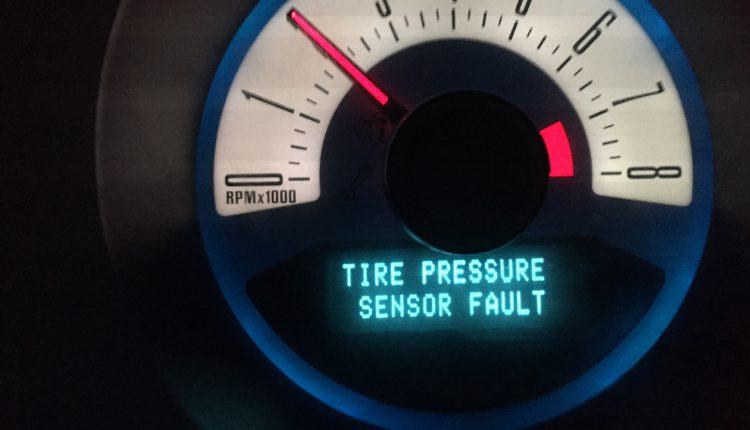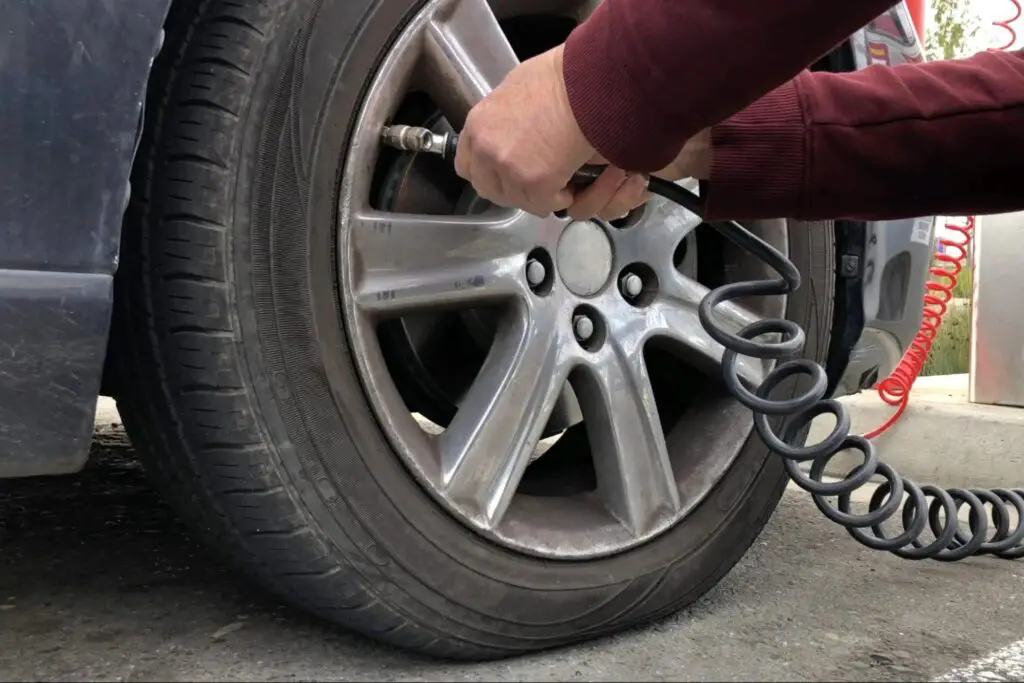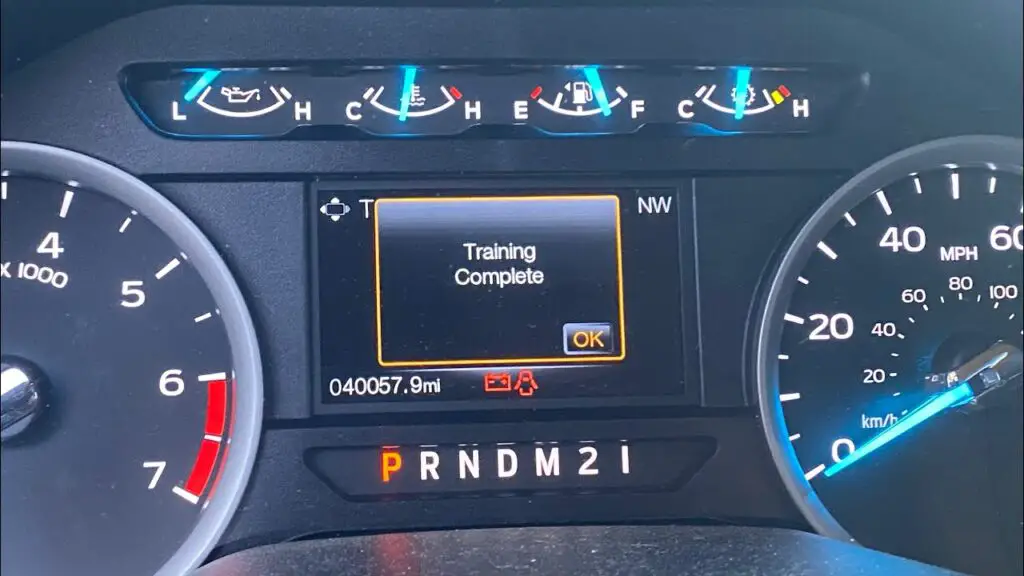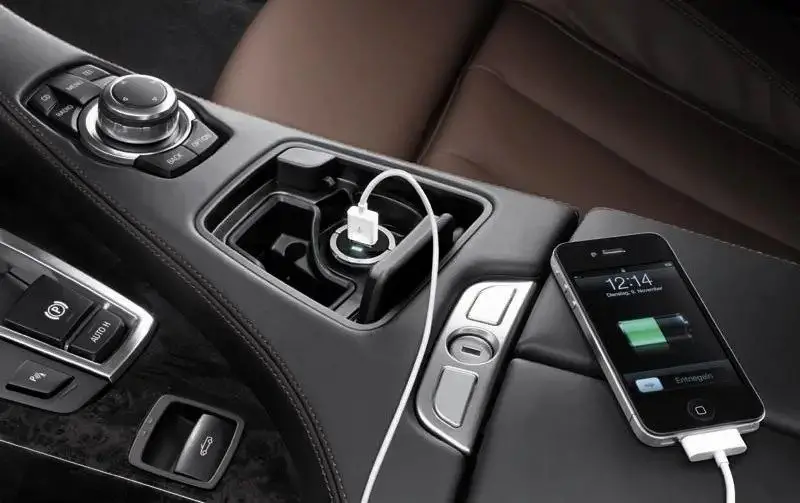Firstly, the tire pressure being too low can cause this issue. Secondly, if the TPMS of the Ford Escape is not working correctly, the tire pressure sensor fault may pop up. Finally, any interference regarding the radio frequency inside and outside the car can be the reason behind the fault.
Although this information is critical, it’s not enough in any way. Read the article till the end to fix the ford escape tire pressure sensor fault for good!
Key Takeaways
- Tire pressure getting low is common. Yet, it can be easily resolved by inflating the tires back up to the recommended PSI.
- External frequencies can disrupt the communication between the TPMS sensors and the car’s ECU. This leads to inaccurate readings of the TPMS system
- Frequency scanners help in programming and relearning the TPMS sensors, ensuring they function properly.
Ford Escape Tire Pressure Sensor Fault: Quick Solutions!
The tire pressure sensor fault on your Ford Escape can be caused by many reasons. Although it may seem like a complex problem, it can be broken down into several parts.
Moreover, this issue is quite common in the automobile industry. Other Ford models also suffer from this problem. For instance, the Ford Fusion tire pressure sensor fault.

By looking at the chart below, you’ll get a brief idea of the reasons and solutions behind this issue.
| Reasons | Symptoms | Solutions |
| Tire pressure too low | Uneven balance of tiresCar drifting to one side while driving | Adjust the tire pressure |
| TPMS not working correctly | Malfunctioning TPMSGiving out wrong sensor signals | Reinitialize and replace the TPMSTest and replace the car battery |
| Radio frequency interference | Tire pressure light lighting up randomly | Remove all USB chargers and accessories |
The quick fixes might not be viable for your situation every time. Keep reading to find out the detailed solution.
Troubleshooting Methods of Ford Escape Tire Pressure Sensor Fault
Now let’s run you through all the necessary procedures and steps to diminish the tire pressure fault of your car.
Reason 1: Tire Pressure Too Low
The most natural reason for any tire pressure sensor fault is the tire pressure getting too low. When the air inside the tire runs out, the tire pressure also decreases thus triggering the tire pressure sensor fault.
Tire pressure may decrease for many reasons. Nails or bolts in your tires, cuts, damage to the tire, etc. Since tires are made out of rubber, over time the elasticity and the tension of the rubber decreases. The tire’s ability to retain pressure also gets lower.
If you drive with tires that have low pressure, it could be fatal. The car will be forced to drift to one side, which may also cause blowouts. Fuel efficiency and acceleration of your Ford will also drastically decrease when the pressure inside the tires is too low.
Solution: Adjust the Tire Pressure
Check the PSI of your tires and adjust them accordingly depending on the current scenario of your car. To do this-
- Take a pressure gauge and note the PSI of each tire first. Make sure to perform the PSI tests after the car’s been sitting idle for at least 3 or 4 hours..
The tire must then be inflated to 35 PSI, which is the PSI that the Ford Escape recommends. You can go through the owner’s manual/look at the sticker on the bottom of the driver side’s door for recommended PSI.
If you have custom tires that are bigger than the original, it will require 35+ PSI.
You can use the air compressor at an auto shop to fill the tire. Once your tires have reached the recommended PSI, make sure to thoroughly seal the valves.

Repeat these actions for each of your Ford Escape’s four tires. The tire pressure sensor issue should then be fixed.
Reason 2: TPMS Not Working Correctly
The TPMS is directly affiliated with calculating the tire pressure of your car. If this monitoring system has errors, it will raise faults like the tire pressure sensor fault in your Ford Escape.
An incorrect tire pressure monitoring system can produce incorrect readings of the tire pressure.
If your tires have recently been changed, the problem can occur. The replacement tires bring up a calibration problem that normally calls for a reset.
Tire size disparities can play a role in this. Mismatching tire sizes is one of the common reasons behind the blinking tire-pressure light in the Honda Civic.
Solution 1 of 2: Reinitialize and Replace the TPMS
To reinitialize the TPSM, you will have to reset the 4 sensors on your car. It’s also known as training the wheels. To reset the sensors-
- Start by putting the key to the ignition lock, and push and release the brake pedal once.
- Then, turn the key to the ‘on’ and ‘off’ position 3 times. Leave it in the run position and push and release the brake pedal again.
- Next, turn the key to ‘off’, and then turn the key to ‘on’ and ‘off’ 3 times again. At this point, you should hear a beeping sound, which indicates that you’re in tire train mode. The dashboard should also show ‘Train Left Front Tire’.
- After that, use an OBD2 scanner to train the tire sensors. Select ‘Ford Fusion’ from the main menu. Then, select the year as well.
- Afterward, go outside of your car. Start by scanning the front left tire. Place the scanner really close to the tire and press ‘scan’.
The horn of the car should honk abruptly once, to indicate that the tire is done training. You can also check the battery status with the scanner.
Finally, repeat this process for all the other tires. Start from the front left tire, then the front right tire, then the rear left and right tires.
After training all 4 tires, the dashboard should show ‘Training Complete’. If that’s not the case, train all 4 tires again.

If the tire pressure sensor fault on the Ford Escape still pops up, you’ll need to replace the sensors. Use the OBD2 scanner to figure out which sensors are defective. Then, take your car to the car shop and replace the sensors.
Each tire pressure sensor costs around $50 – $100, excluding the labor costs. After you replace the sensors, train the tires again to reset the calibration. Do it each time you change a tire to avoid faults like these.
Lastly, you can also drive the car at 50mph for 10 minutes to do a soft reset of the TPMS.
Solution 2 of 2: Test and Replace the Car Battery
To test out the battery, first disconnect the battery from the car. Then, honk the car 3 times to let out all the stored charge. After that, reconnect the battery and check if the tire pressure fault is still up. If it’s up, do the following steps-
- First, check the car battery’s output voltage by a multimeter of your choice. If the voltage is below 10.5V, proceed with the replacement. Find the car battery and disconnect the terminals of the battery.
- Then, remove the old battery and clean the terminals and the battery tray.
- Finally, place the new battery in place and connect the positive terminals and negative terminals accordingly.
Reason 3: Radio Frequency Interference
The Ford Escape’s tire pressure sensor may trip if its radio frequency is disrupted in any way. Even though it seems like a fairly uncommon cause, many individuals are suffering from it unknowingly.
Signals are used by the Ford Fusion’s tire pressure sensors to interact with the system. The Ford Fusion’s dashboard receives signals from each tire, which leads to the tire pressure sensor issue. When your car is moving, this issue occurs.
You can be sure of this by looking out for error codes. When the tire pressure modules cannot communicate with each other for a long time, Ford throws in a 2278A error code.
This problem could be brought on by plugged-in car chargers. Additionally, it can occur in areas where there are a lot of radio frequency transmissions. For instance, close to radio stations, airports, etc.

Solution: Remove All USB Chargers and Accessories
In most cases, car chargers that are cheap are the ones that leak with unnecessary frequency. So if you are in dire need of a charger, buy good quality car chargers.
Also, disconnect all the chargers and USB accessories inside your Ford to minimize unnecessary radiations and frequencies. It’s also applicable for electric cars as well; despite the radiation in electric cars being low.
Frequently Asked Questions (FAQs):
Are Tire Pressure Sensor Batteries Repairable?
No, tire pressure sensor batteries are not repairable. These batteries have a lifespan of 3 to 11 years. The entire sensor has to be changed for a fresh pair of batteries.
Can You Drive with a Tire Pressure Sensor Fault?
Yes, it is possible to drive with a tire pressure sensor fault. However, it is not recommended in any way, as it can cause accidents that will harm you and your car.
How Long Do Ford TPMS Sensors Last?
Ford TPMS sensors last 5 to 10 years on average. With time, the batteries inside the sensor wear out, demanding a replacement.
Conclusion
That’s everything on the ford escape tire pressure sensor fault. Hopefully, you will be able to diagnose the problem correctly and fix it without any hassle.
A regular check-up of your car at the car shop can be handy to avoid hiccups like this. Furthermore, it will ensure your safety and a healthy car engine and system. Have a good one.
